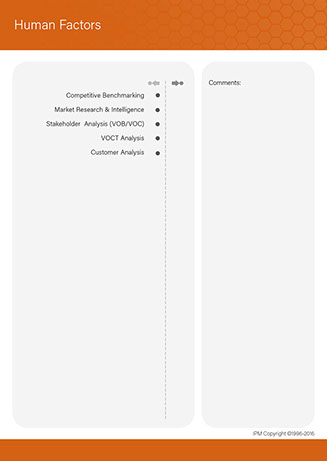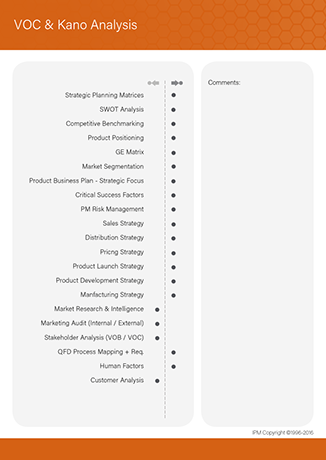Glossary
Logout
©Copyright Arcturus 2022, All Rights Reserved.
7
Terms & Conditions
|
|
|
|
Security & Privacy
Contact
HUMAN FACTORS / INTERACTION DESIGN & AESTHETICS
|The principles & laws of UX
Aesthetic-Usability Effect
Users often perceive aesthetically pleasing design as design that’s more usable.
The aesthetic-usability effect was first studied in the field of human-computer interaction in 1995. Researchers Masaaki Kurosu and Kaori Kashimura from the Hitachi Design Centre tested 26 variations of an ATM UI, asking the 252 study participants to rate each design on ease of use, as well as aesthetic appeal. They found a stronger correlation between the participants’ ratings of aesthetic appeal and perceived ease of use than the relationship between their scores of aesthetic appeal and actual ease of use. Kurosu and Kashimura concluded that users are strongly influenced by the aesthetics of any given interface, even when they try to evaluate the underlying functionality of the system.
Doherty Threshold
Productivity soars when a computer and its users interact at a pace (<400ms) that ensures that neither must wait on the other.
In 1982 Walter J. Doherty and Ahrvind J. Thadani published, in the IBM Systems Journal, a research paper that set the requirement for computer response time to be 400 milliseconds, not 2,000 (2 seconds) which had been the previous standard. When a human being’s command was executed and returned an answer In under 400 milliseconds, it was deemed to exceed the Doherty threshold, and use of such applications was considered to be “addictive” to users.
Fitts’s Law
The time to acquire a target is a function of the distance to and size of the target.
In 1954, psychologist Paul Fitts, examining the human motor system, showed that the time required to move to a target depends on the distance to it, yet relates inversely to its size. By his law, fast movements and small targets result in higher error rates, due to the speed-accuracy trade-off. Although multiple variants of Fitts’ law exist, all encompass this idea. Fitts’ law is widely applied in user experience (UX) and user interface (UI) design. For example, this law influenced the convention of making interactive buttons large (especially on finger-operated mobile devices)—smaller buttons are more difficult (and time-consuming) to click. Likewise, the distance between a user’s task/attention area and the task-related button should be kept as short as possible.
Hick’s Law
The time it takes to make a decision increases with the number and complexity of choices.
Hick’s Law (or the Hick-Hyman Law) is named after a British and an American psychologist team of William Edmund Hick and Ray Hyman. In 1952, this pair set out to examine the relationship between the number of stimuli present and an individual’s reaction time to any given stimulus. As you would expect, the more stimuli to choose from, the longer it takes the user to make a decision on which one to interact with. Users bombarded with choices have to take time to interpret and decide, giving them work they don’t want.
Jakob’s Law
Users spend most of their time on other sites. This means that users prefer your site to work the same way as all the other sites they already know.
Jakob's Law was coined by Jakob Nielsen, a User Advocate and principal of the Nielsen Norman Group which he co-founded with Dr. Donald A. Norman (former VP of research at Apple Computer). Dr. Nielsen established the 'discount usability engineering' movement for fast and cheap improvements of user interfaces and has invented several usability methods, including heuristic evaluation.
Law of Common Region
Elements tend to be perceived into groups if they are sharing an area with a clearly defined boundary.
The principles of grouping (or Gestalt laws of grouping) are a set of principles in psychology, first proposed by Gestalt psychologists to account for the observation that humans naturally perceive objects as organized patterns and objects, a principle known as Prägnanz. Gestalt psychologists argued that these principles exist because the mind has an innate disposition to perceive patterns in the stimulus based on certain rules. These principles are organized into five categories: Proximity, Similarity, Continuity, Closure, and Connectedness.
Law of Prägnanz
People will perceive and interpret ambiguous or complex images as the purest form possible because it is the interpretation that requires the least cognitive effort of us.
In 1910, psychologist Max Wertheimer had an insight when he observed a series of lights flashing on and off at a railroad crossing. It was similar to how the lights encircling a movie theatre marquee flash on and off. To the observer, it appears as if a single light moves around the marquee, travelling from bulb to bulb when in reality it’s a series of bulbs turning on and off and the lights don’t move it all. This observation led to a set of clear principles about how we visually perceive objects.
Law of Proximity
Objects that are near, or proximate to each other, tend to be grouped together.
The principles of grouping (or Gestalt laws of grouping) are a set of principles in psychology, first proposed by Gestalt psychologists to account for the observation that humans naturally perceive objects as organized patterns and objects, a principle known as Prägnanz. Gestalt psychologists argued that these principles exist because the mind has an innate disposition to recognise patterns in the stimulus based on certain rules. These principles are organised into five categories: Proximity, Similarity, Continuity, Closure, and Connectedness.
Law of Similarity
The human eye tends to perceive similar elements in a design as a complete picture, shape, or group, even if those elements are separated.
The principles of grouping (or Gestalt laws of grouping) are a set of principles in psychology, first proposed by Gestalt psychologists to account for the observation that humans naturally perceive objects as organised patterns and objects, a principle known as Prägnanz. Gestalt psychologists argued that these principles exist because the mind has an innate disposition to recognise patterns in the stimulus based on specific rules. These principles are organized into five categories: Proximity, Similarity, Continuity, Closure, and Connectedness.
Law of Uniform Connectedness
Elements that are visually connected are perceived as more related than components with no connection.
The principles of grouping (or Gestalt laws of grouping) are a set of principles in psychology, first proposed by Gestalt psychologists to account for the observation that humans naturally perceive objects as organised patterns and objects, a principle known as Prägnanz. Gestalt psychologists argued that these principles exist because the mind has an innate disposition to perceive patterns in the stimulus based on certain rules. These principles are organized into five categories: Proximity, Similarity, Continuity, Closure, and Connectedness.
Miller’s Law
The average person can only keep 7 items in their working memory.
In 1956, George Miller asserted that the span of immediate memory and absolute judgment were both limited to around 7 pieces of information. The main unit of information is the bit, the amount of data necessary to make a choice between two equally likely alternatives. Likewise, 4 bits of information is a decision between 16 binary alternatives (4 successive binary decisions). The point where confusion creates an incorrect judgment is the channel capacity. In other words, the number of bits which can be transmitted reliably through a channel, within a certain amount of time.
Occam’s Razor
For competing hypotheses that predict equally well, the one with the fewest assumptions should be selected.
Occam's razor (also Ockham's razor; Latin: lex parsimoniae "law of parsimony") is a problem-solving principle that, when presented with competing hypothetical answers to a problem, one should select the one that makes the fewest assumptions. The idea is attributed to William of Ockham (c. 1287–1347), who was an English Franciscan friar, scholastic philosopher, and theologian.
Pareto Principle
The Pareto principle states that, from a representative sample, approximately 80% of the effects come from 20% of the causes.
Its origins stem back to Vilfredo Pareto, an economist who noticed 80% of Italy’s land was owned by 20% of the population. Though it might seem vague, the 80/20 way of thinking can provide insightful and endlessly applicable analysis of lopsided systems, including user experience strategy.
Parkinson’s Law
Any task will inflate until all of the available time is spent.
As quoted by Cyril Northcote Parkinson as part of the first sentence of an essay published in The Economist in 1955 and since republished online, it was reprinted with other articles in the book Parkinson's Law: The Pursuit of Progress (London, John Murray, 1958). He derived the dictum from his extensive experience in the British Civil Service.
Postel’s Law
Be liberal in what you accept, and conservative in what you send.
Postel's Law (also known as the Robustness Principle) was formulated by Jon Postel, an early pioneer of the Internet. The Law is a design guideline for software, specifically in regards to TCP and networks.
Serial Position Effect
Users have a propensity to best remember the first and last items in a series.
The ‘serial position effect’, a term coined by Herman Ebbinghaus, describes how the position of an item in a sequence affects recall accuracy. The two concepts involved, the primacy effect and the recency effect, explains how items presented at the beginning of a sequence and the end of a sequence are recalled with greater accuracy than items in the middle of a list. Manipulation of the serial position effect to create better user experiences is reflected in many popular designs by successful companies like Apple, Electronic Arts, and Nike.
Tesler’s Law
Tesler's Law, also known as The Law of Conservation of Complexity, states that for any system there is a certain amount of complexity which cannot be reduced.
While working for Xerox PARC in the mid-1980s, Larry Tesler realized that the way users interact with applications was just as important as the application itself. The book Designing for Interaction by Dan Saffer, includes an interview with Larry Tesler that describes the law of conservation of complexity. The interview is popular among user experience and interaction designers. Larry Tesler argues that, in most cases, an engineer should spend an extra week reducing the complexity of an application versus making millions of users spend an extra minute using the program because of the extra complexity. However, Bruce Tognazzini proposes that people resist reductions to the amount of complexity in their lives. Thus, when an application is simplified, users begin attempting more complex tasks.
Von Restorff Effect
The Von Restorff effect, also known as The Isolation Effect, predicts that when multiple similar objects are present, the one that differs from the rest is most likely to be remembered.
The theory was coined by German psychiatrist and paediatrician Hedwig von Restorff (1906–1962), who, in her 1933 study, found that when participants were presented with a list of categorically similar items with one unique, isolated item on the list, memory for the item was improved.
Zeigarnik Effect
People remember uncompleted or interrupted tasks better than completed tasks.
Bluma Wulfovna Zeigarnik (1900 – 1988) was a Soviet psychologist and psychiatrist, a member of the Berlin School of experimental psychology and Vygotsky Circle. She discovered the Zeigarnik effect and contributed to the establishment of experimental psychopathology as a separate discipline in the Soviet Union in the post-World War II period. In the 1920s she conducted a study on memory, in which she compared memory in relation to incomplete and complete tasks. She had found that incomplete tasks are easier to remember than successful ones. This is now known as the Zeigarnik effect. She later began working at the Institute of Higher Nervous Activity which is where she would meet her next big influence Vygowski, and become a part of his circle of scientists. It was also there that Zeigarnik founded the Department of Psychology. During that time, Zeigarnik received the Lewin Memorial Award in 1983 for her psychological research.
| Design / Cultural Position Mapping
|Related Procedures
The following interrelationship maps indicate; suggested content from other models/processes which may have influence or an effect on the analysis of the title process. The left-hand column indicates information or impact from the named process and the left-hand column indicates on completion of the process/analysis it may have an influence or effect on the listed processes.
Note: A complete set (professional quality) of PMM interrelationship cards are available to purchase - please contact us for further details.


|Strategic Business Models, Workshop Tools & Professional Resources
The IPM practitioner series, is a definitive and integrated training programme for management professionals operating in the Product Management arena. So whether you’re the Managing Director, Product Director, Product Manager or a member of the Multidisciplinary Team we are confident that you will find this particular training series to be one of the best available and an invaluable asset to both you and your company.
PMM - Professional Support
Workshop Material
More















